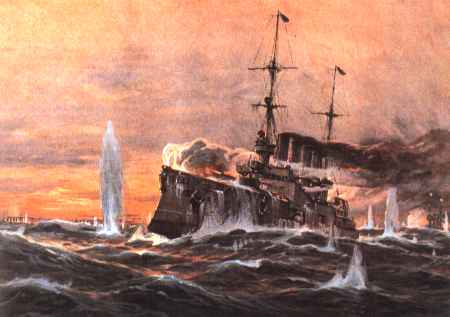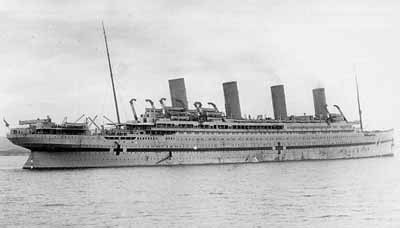WWI Battles And Sinking: Naval War On All The World’s Seas
In the Great War it was the sea battles in the Mediterranean Sea, the Indian and Pacific Oceans that were legendary. For as the land war was characterized by persistent stalemate in large areas and mobile combat on peripheral battlefields, the same canot be said of the naval war.
Geography was a major factor in the outcome of World War I; the Central Power nations’ access to the oceans was limited and the subsequent blockades of the Baltic and Mediterranean seas, by the Allied nations, proved decisive in who was to win.
The First Sinkings Of The Great War
- On 5th August 1914 the SS Königin Luise was sunk, she was an auxiliary minelayer, the first Kaiserliche Marine ship to be sunk, by HMS Amphion.
- On 6th August Amphion struck a mine off the Thames Estuary, and was sunk. She was an Active-class scout cruiser, the first Royal Navy ship to be sunk. The casualties were; one hundred and fifty British sailors and eighteen of the crew who had been rescued from the Königin Luise.
- On 5th September 1914, the German submarine U-21 torpedoed the Royal Navy light cruiser HMS Pathfinder. The cruiser’s magazine exploded, and the ship sank in four minutes. This was the first combat victory for a modern submarine.
The Largest Sea Battle of World War One

Battlel of Coronel, 1915
The Battle of Jutland (German: Skagerrakschlacht), 1916, was the largest naval battle of the war and one of the largest in naval history.
It was a “titanic” clash of fifty eight battleships, five of which were Queen Elizabeth class dreadnoughts. Each of these ships was home to a thousand sailors of the Royal Navy or the German Kaiserliche Marine.
The battle was fought over two days, a hundred miles off Jutland (Denmark) in the North Sea.
In two phases, it was a complex and a confused affair with the fleets changing direction, making mistakes and even (it is said) “milling around”. Both sides claimed victory but in fact there was no victor. The Germans sank fourteen British ships losing eleven of their own; none of them were dreadnaught class.
The engagement was a “standoff”, as the Germans, outmaneuvered by the larger British fleet, managed to escape and inflicted more damage to the British ships than they received. Strategically, however, the British asserted their control of the sea and the bulk of the German surface fleet remained confined to port for the duration of the war.
A Deliberate Sinking
The British planned to blockade the Belgian port of Zeebrugge thus stopping the passage, through the canal, of German U-boats into the North Sea. In April 1918 the cruiser HMS Vindictive, two passenger ferries, carrying marines, and three old warships, Thetis, Intrepid and Iphigenia, each filled with concrete, were sailed to the entrance of the canal. Whilst the marines engaged the harbor defenses the three warships were strategically placed and then scuttled. They sank, with no men on board, and the canal was well and truly blocked. A British submarine was also detonated, after the crew left, it effectively destroyed the viaduct. After retrieving the British troops Vindictive withdrew under the cover of a smoke screen. This raid was called “an episode unsurpassed in the history of the Royal Navy”.
The Largest Ship to Sink in World War I

HMHS Britannic (sister ship of the Titanic), 1916
HMHS Britannic (53,000 tons) was an Olympic class ocean passenger liner. She was a sister ship of RMS Titanic, and was an auxiliary hospital ship during the war. In 1916 she struck an underwater mine off the Greek island of Kea, in the Kea Channel, and sank with the loss of thirty lives. The Britannic was the largest ship sunk during the First World War.
The Last Sinking of The Great War
On 21 June 1919, after the end of World War I, the bulk of the Kaiserliche Marine Navy’s modern ships (seventy four in all) were interned at Scapa Flow, in the Orkney Islands, where almost the entire fleet was scuttled, by its own crewmen, on the orders of their commander. In all fifty two ships including four light cruisers and thirty two destroyers were sunk.
The remaining twenty two ships were grounded on the beaches. Aboard their ships nine Germans were killed and sixteen wounded as the British tried to intervene.
These sailors were some of the last casualties of the Great War.
Naval Battles of World War I Photographs